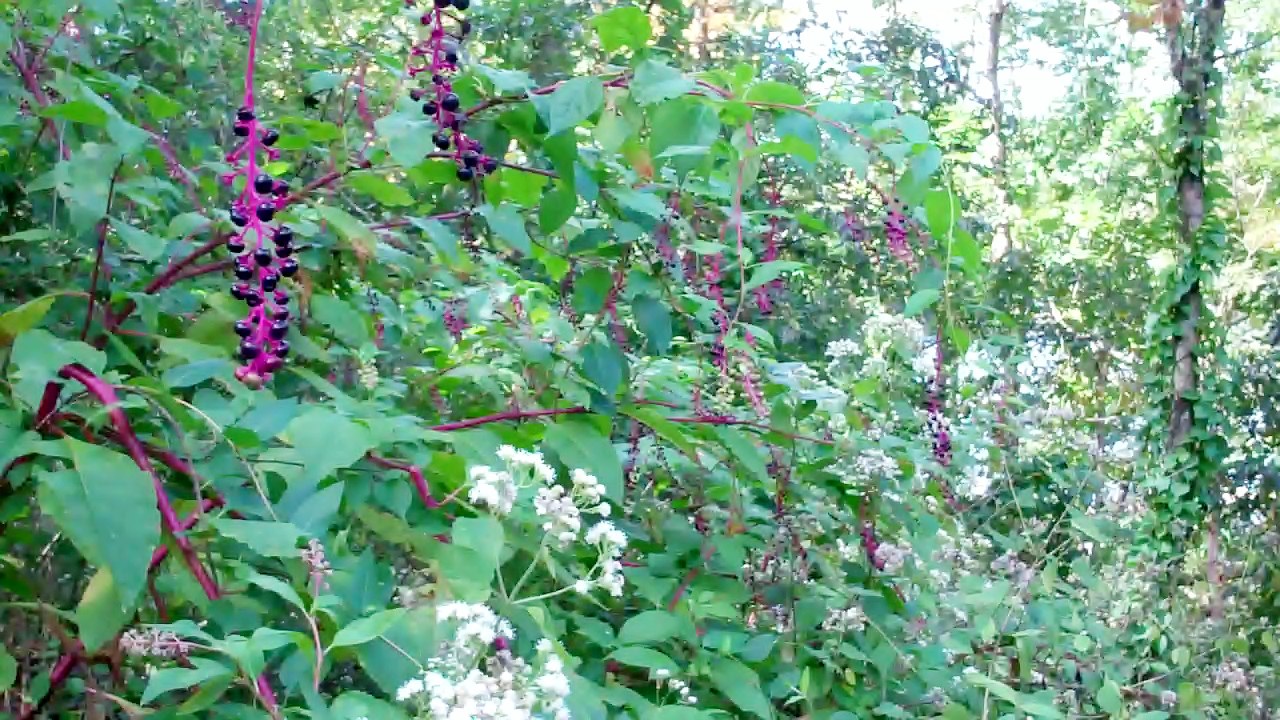Never eat any wild food without first being 100 percent sure of its identity.
- Get a good guidebook.
- Don't be overly ambitious.
- Spend time getting to know your local area.
- Tag along with an expert or take a class.
- Make sure the area has not been treated with herbicides.
- Harvesting along roads is not a good idea.
In Pennsylvania, some common forest foods collected include:
- Blueberries, raspberries, and other small fruit
- Mushrooms
- Ramps or wild leeks
- Hickory nuts, walnuts, acorns, and hazelnuts
Toxic Plants
- Poison Ivy
- Poison Oak
- Poison Sumac
- Pokeberries
- Snakeroots
- Wild Cherry (Leaves, Bark, and Pits)
- Virginia Creeper
- Nightshade
- Buckeye Nuts
- Dogwood
- Holly
- Wisteria
- Rhododendron
- Giant Hogweed
- Moonseed
- Horse Nettle
The fall is a great time of year to identify NON-edible plants mainly because it's what the deer and groundhogs won't eat. Snakeroots is the wildflower with the small white clusters. Pokeweed is the purple berries (click on the picture to enlarge). Neither are "poisonous" in small amounts but large amounts can be toxic. Both are more toxic the more mature. Immature pokeweed leaves are actually used for an old "folk" recipe called poke salad; however, the berries are toxic.
The Dangers of Organic Eating
The fact is -- there are very few poisonous plants and animals in Pennsylvania. The larger threat
is inadvertent exposure especially long term exposure. Organic means "relating to or derived from living matter" or "without the use of artificial agents." Planting your seeds in feces is organic farming,
but that doesn't mean it is without risk. Many people inadvertently eat E.Coli and Salmonella.
When someone accidently throws wood in the fire that is covered in poison ivy, the smoke can get into your eyes, nasal cavity, and lungs.
Wild cherry is an interesting example. The fruit is edible either raw or cooked; however, the leaves, twigs and seeds are highly poisonous containing cyanogenic glycoside (creates cyanide) and can cause spasms, convulsions and respiratory failure. The problem comes when people use the plant for other purposes than eating the cherries. Indigenous peoples of Pennsylvania chewed on cherry and birch as toothbrushes and dental floss. Perhaps the cyanide helped kill the bacteria and was not swallowed. Many youngsters have cooked marshmallows or hot dogs using a stick from a wild cherry or birch tree resulting in cyanide poisoning. Many home gardeners have constructed raised beds using cherry or birch wood resulting in cyanide poisoning.
Most toxic risks come from the leaching of chemicals into edible plants. Pressure treated lumber, plastics, and many other materials leach chemicals into the safe-to-eat-plants. Often the poisons are leached into the safe plants through chemicals found naturally in the soil. Dark chocolate can contain cadmium and lead that have leached in through the soil. Though chocolate isn't indigenous to Pennsylvania, root vegetables, such as carrots or sweet potatoes, can contain high levels of lead. Leafy vegetables including lettuce and Swiss chard, follow in risk. Fruiting vegetables, such as tomatoes, are the least likely to contain lead absorbed from soil. Plastic water bottles, used tires, and other trash are not recommended for recycling into gardens. Foraging along roadsides poses a high risk of exposure to toxins due to pollution and intentional herbicide spraying.
